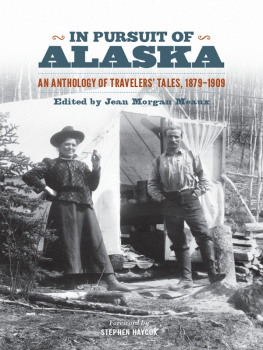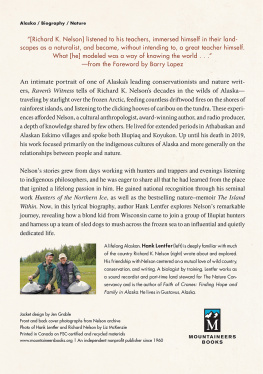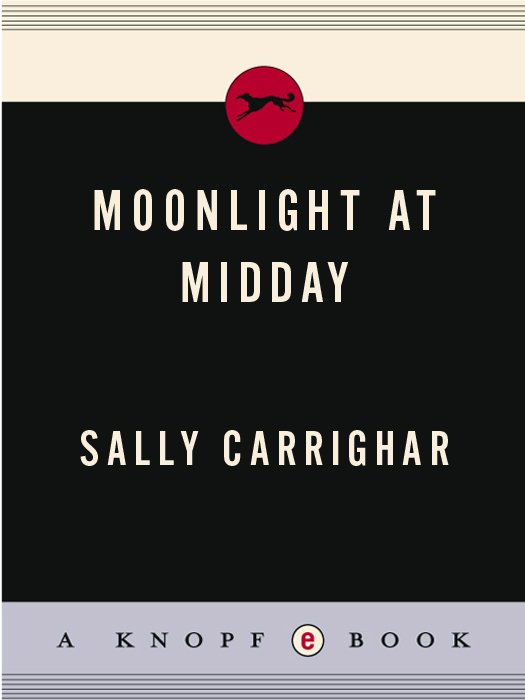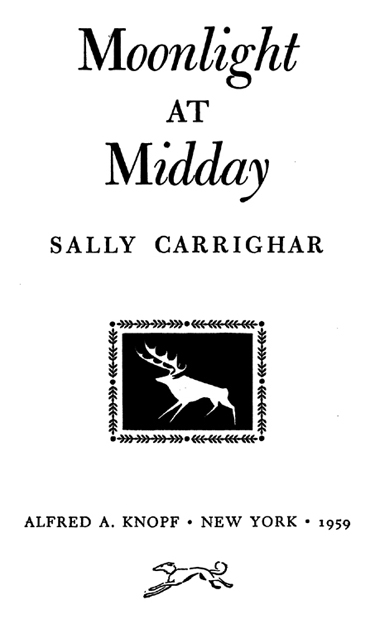
By
SALLY CARRIGHAR
Moonlight at Midday (1958)
Icebound Summer (1953)
One Day at Teton Marsh (1947)
One Day on Beetle Rock (1944)
These are BORZOI BOOKS published in New York by Alfred A. Knopf
L. C. Catalog card number: 5810965
Sally Carrighar, 1958
THIS IS A BORZOI BOOK,
PUBLISHED BY ALFRED A. KNOPF, INC.
Copyright 1950, 1954, 1955 by The Curtis Publishing Company, copyright 1956, 1958 by Sally Carrighar, member of the Authors League of America. All rights reserved. No part of this book may be reproduced in any form without permission in writing from the publisher, except by a reviewer who may quote brief passages and reproduce not more than three illustrations in a review to be printed in a magazine or newspaper. Published simultaneously in Canada by McClelland & Stewart Ltd.
eISBN: 978-0-307-83133-0
v3.1
To
DR. CARL RENZ

who still lives in the new lives
he gave to his patients
PREFACE

The Forty-Ninth Star
B ONFIRES ACROSS two thousand miles of the Northern wildernessthat would have been a spectacle if anyone could have seen all of them! Alaskans are not much given to shooting off firecrackers. They may feel that explosive noise-makers, however loud, have only a popgun effect in the silences of this vast, peaceful land. In such country, however, any bonfire will stir the emotions. A bonfire means human beings, other people, whose welcome is sure to be friendly. And a fire typifies life itself here, where for part of the year warmth is more immediately essential than food. It was natural, then, that Alaskans would celebrate the vote that admitted their Territory into the Union with bonfires.
In debates on Alaska statehood, here and there, it has sometimes been said that the residents might be reckless in managing their affairs. Were not most of the early settlers rough, heedless characters who were drawn to Alaska because of the feverish gold rush? The miners who have remained, the sourdoughs of today, are a class of men extraordinarily reasonable and gentle. Whatever they were when they came to the North, here, like the rest of the pioneers, they encountered the arctic climate.
That climate is a great disciplinarian. It forces a man to be realistic, and it teaches that those who do not stand together do not survive. Quickly learning those lessons, the gold-rush miners developed a practical outlook and consideration for others needs. If, by August first, a prospector had not made a stake that would carry him through until spring, he was allowed to pan on the gold-bearing claim of any more fortunate neighbor. Today few Alaskans are seeking gold, but the climate is still the same, and so are the caution and kindliness. The arctic still bends a mans will. Other far-Northern countries, Norway, Sweden, Finland, and our well-balanced neighbor, Canada, all are known as among the best-governed lands in the world. For them too an austere climate probably is an influence. And there is evidence that in good sense, in thoughtfulness, and in social responsibility the state of Alaska will join them.
Those who have been fearful of recklessness might have looked at the record made by the Territorial government. It has been allowed to control only one per cent of Alaskas area (Washington has held 99 per cent); yet the services that the Territory provided have been a matter of pride with all residents.
In the Territorys last budget 51 per cent of its revenues were allocated to education; its teachers earn higher salaries than teachers anywhere else in the states. Alaska roads and airfields are efficiently engineered and maintained, in spite of the winter emergencies and the frozen soil. Utility systems have been designed that operate when the temperature is fifty degrees below zero. Traffic, the very small amount of juvenile delinquency, labor relations: problems like these all have been handled well.
In the humane Northern spirit, moreover, the Territory has seen its treatment of residents as calling for helpfulness that goes beyond justice, beyond what is merely fair. The ill, the aged of all races, dependent children, the handicapped, and unemployed are very adequately taken care of. No racial discrimination has been allowed in Alaska for fifteen years. Another example of social responsibility has been the Territorial help for some of the natives, who, many Alaskans believe, are badly mismanaged by the distant Indian Bureau. The Bureau has only one solution to the present economic dilemma of Northern natives: to move them to white-mens cities. Most of the white Alaskans view that plan as a tragedy for the Eskimos and Indians at this stage of their culture. Out of the limited Territorial revenues, therefore, Alaska has started to modernize native villages. Well-equipped workshops are being set up where the natives can practice civilized skills. Voluntarily, also, the Territory has taken over some poorly run Indian Bureau schools.
In providing these services, the Territorial government has not been extravagant. Its finances are in the black. However, much that the planning boards would have liked to do has necessarily been postponed. Many public services are still only a promisebut a promise that at last seems likely of early fulfillment.
As everyone now must know if he reads a newspaper or listens to broadcasts, Alaska, the state, may select from the public lands about 100,000,000 acres, or a fourth of its area. On these acres a much larger, permanent population will establish its homesteads and farms, its cities and industries. From these acres will be filled most of the peoples needs, their food, fuel, and other supplies, and from them will come the revenues of the new state government.
Everyone must have heard, too, that the country is very rich in its known resourcestimber, minerals, fish, and hydroelectric powerand even richer in its potentials, such as oil and gas, already found in commercial quantities. No state, surely, ever made a more promising start.
We lighted some of our bonfires for the federal agencies that have been especially helpful during our Territorial yearsfor the Civil Aeronautics Administration, always dependable in its guidance of pilots up in the arctic skies; for the Weather Bureau; the United States Public Health Service; and District Judges. To these, as well as some of the other officials, Alaskans will never forget that we owe our thanks.
Our appreciation should not be overshadowed by a listing of ways that have needed, and still need, a change in Washington policies. A few pieces of unfinished business have not been disposed of by making Alaska a state.
The first concerns salmon. Salmon, even in its depleted condition, is Alaskas most valuable resource. And yet the bill just passed deprived the state government of its management. From the earliest days of American settlement, Alaska has helplessly seen its salmon exploited by Stateside cannerieshelplessly because the Territorial status permitted the federal government to control the wildlife. The canneries have been allowed to come into Alaskas waters and build fish traps that prevent far too many salmon from getting into the rivers where they would spawn. The same kind of traps have long been outlawed in states where the canneries have their headquarters, and Alaskans have voted, seven to one, to condemn their use. That vote was ignored in Washington, where, under a program of perpetual studies of salmon populations, the Fish and Wildlife Service has refused to abolish the Northern traps. Meanwhile the salmon runs have declined phenominally. The 1957 pack was the smallest in fifty years.











